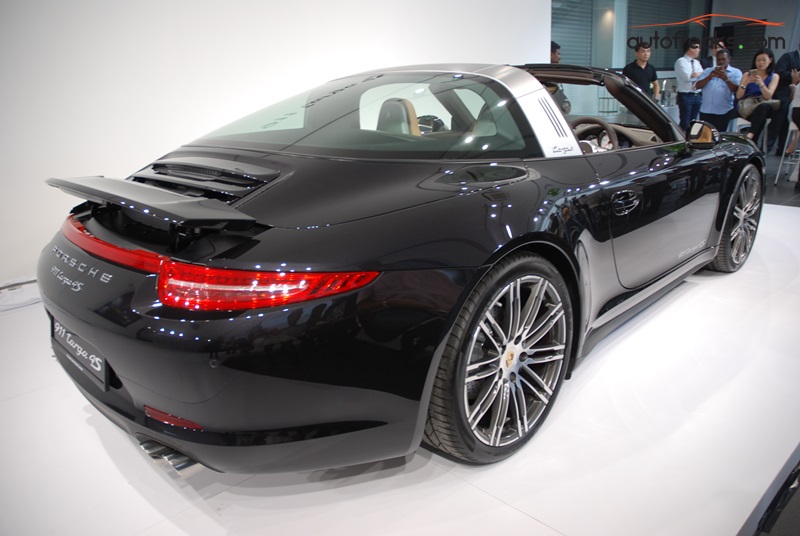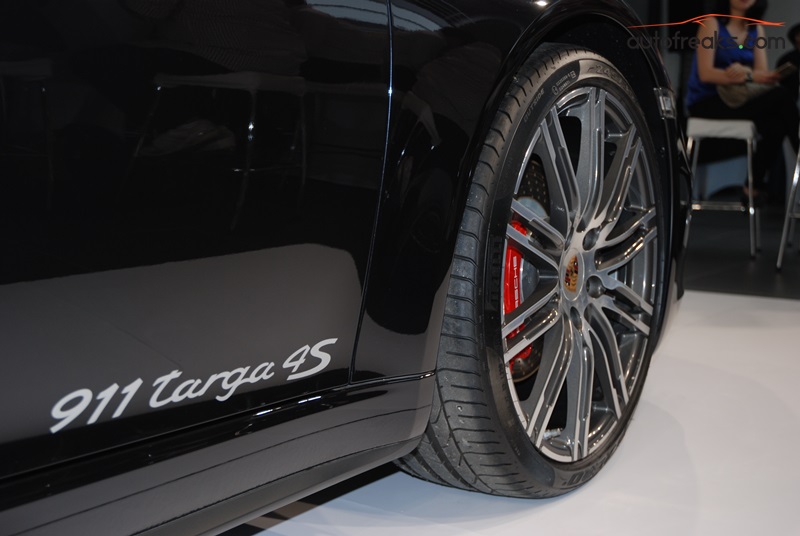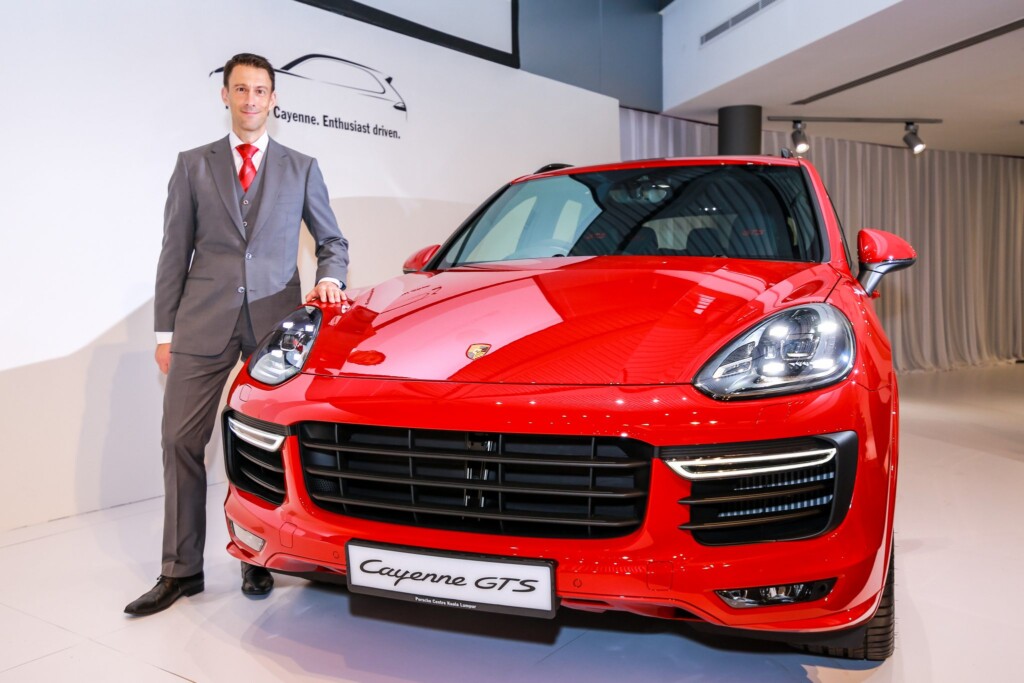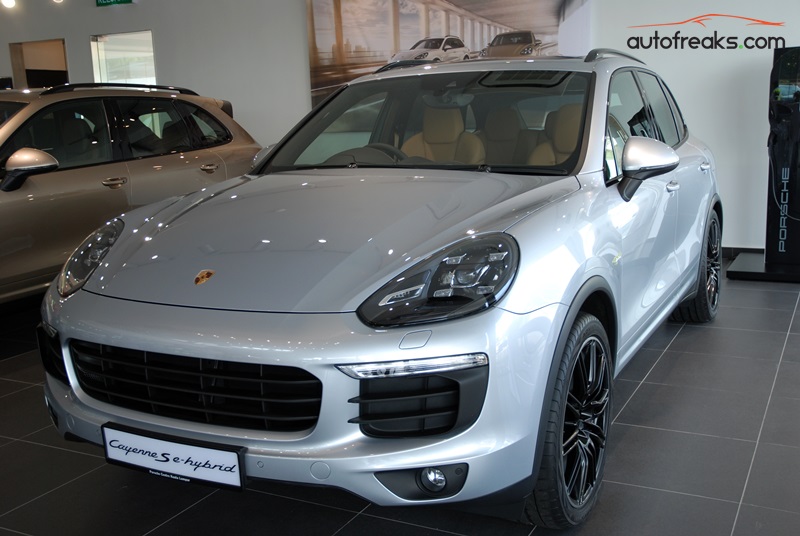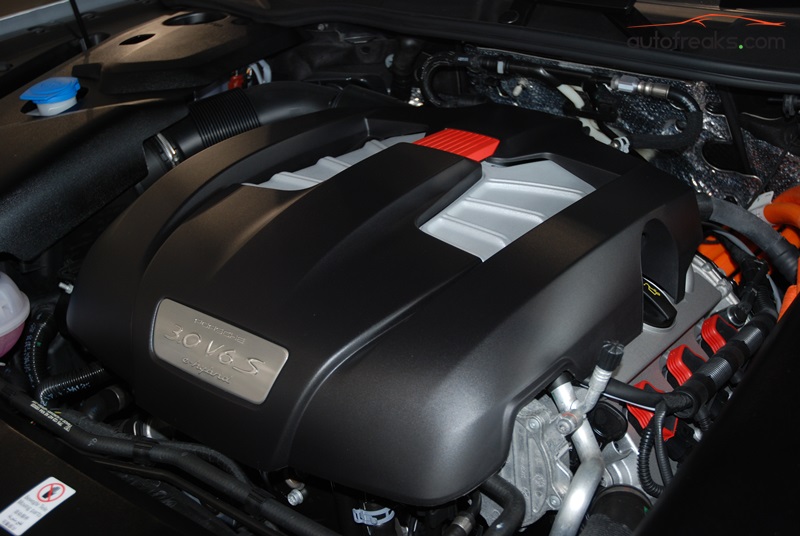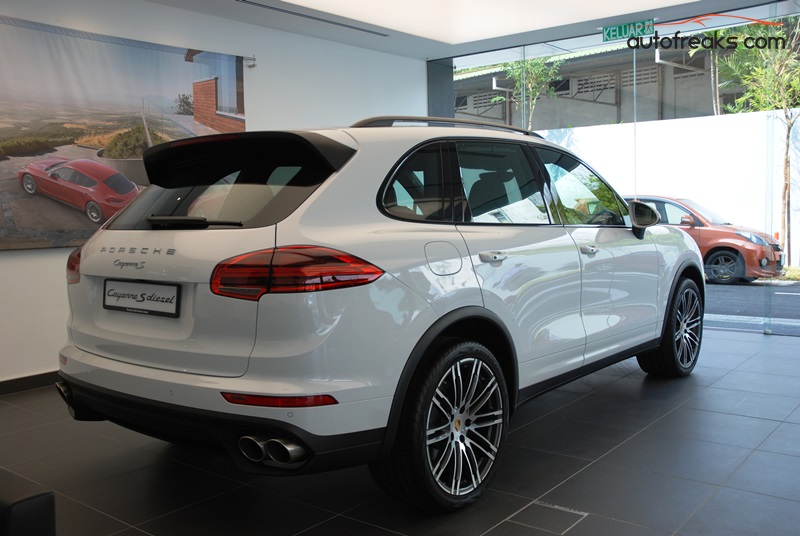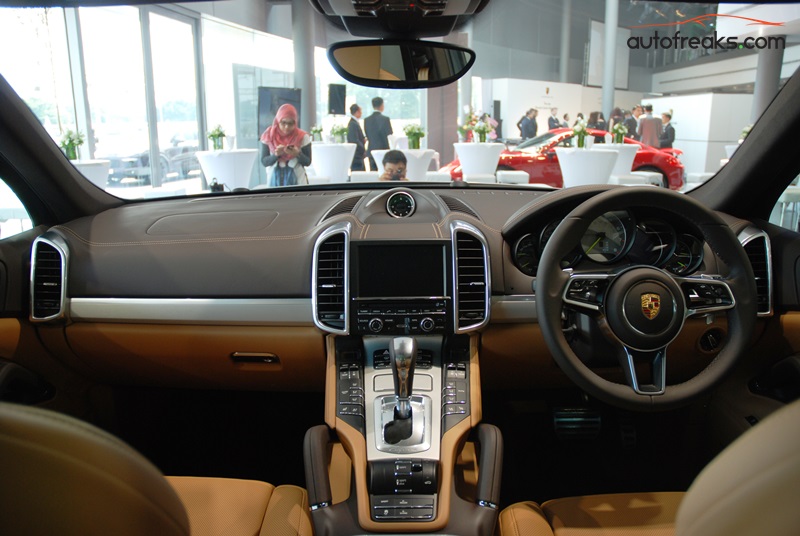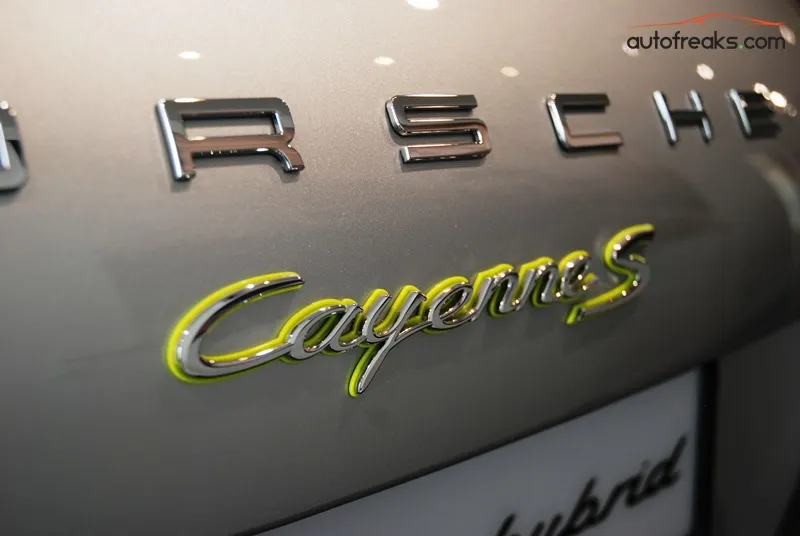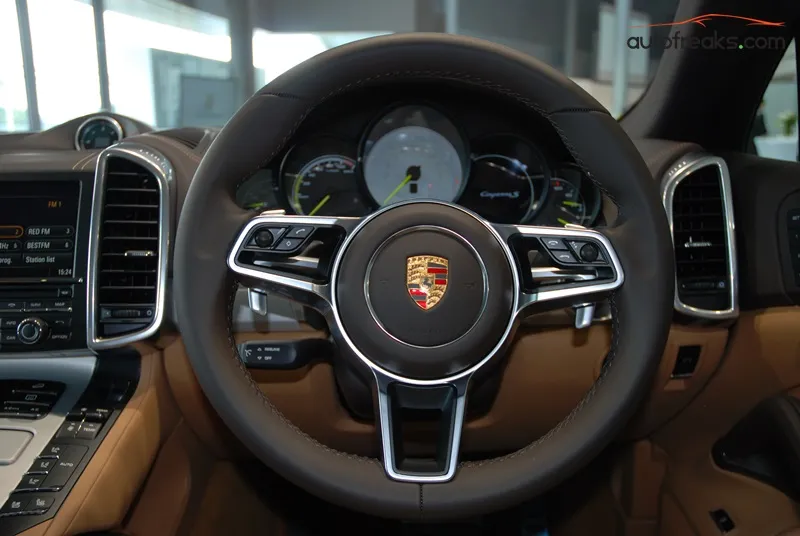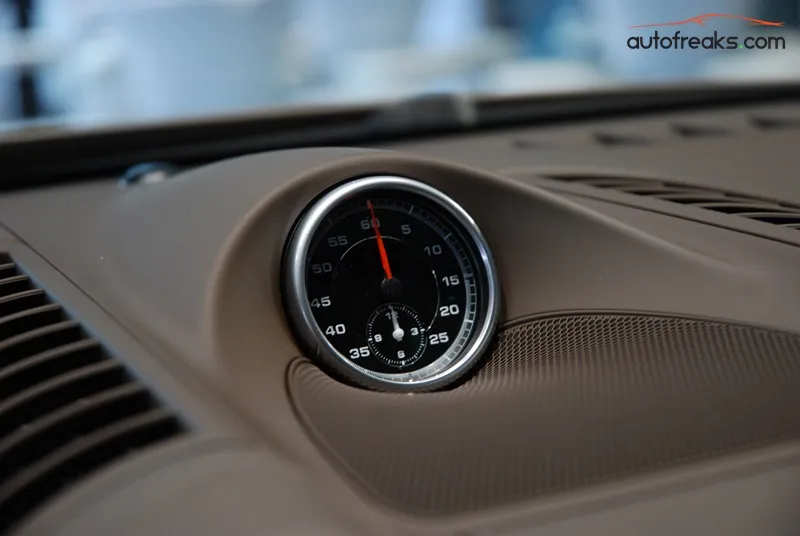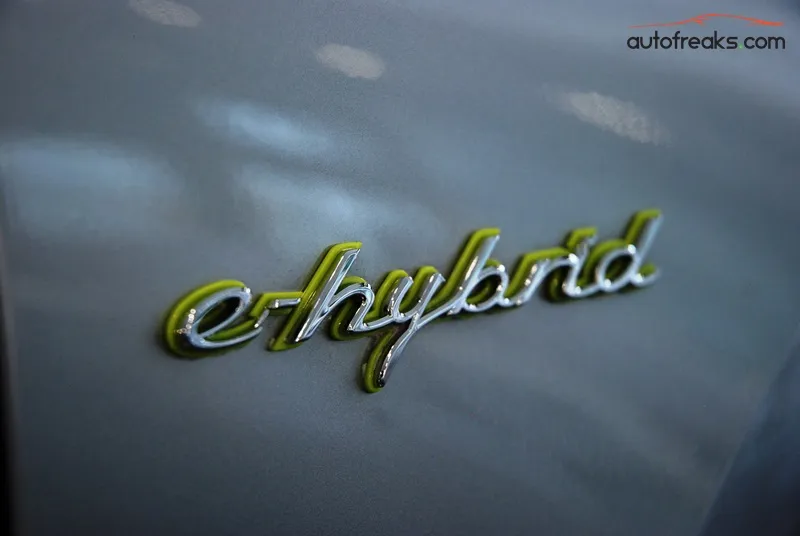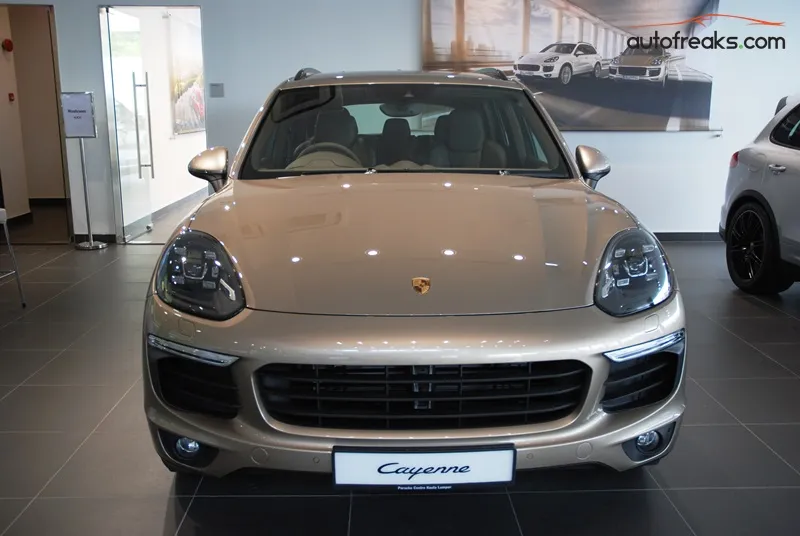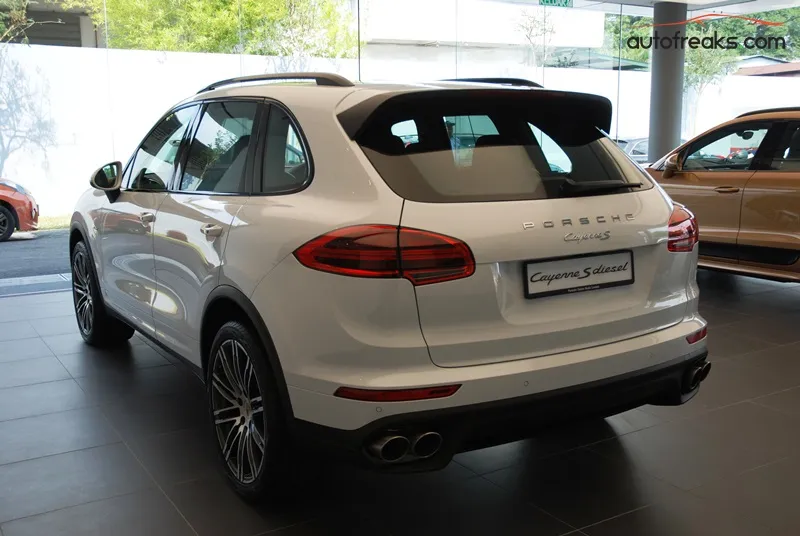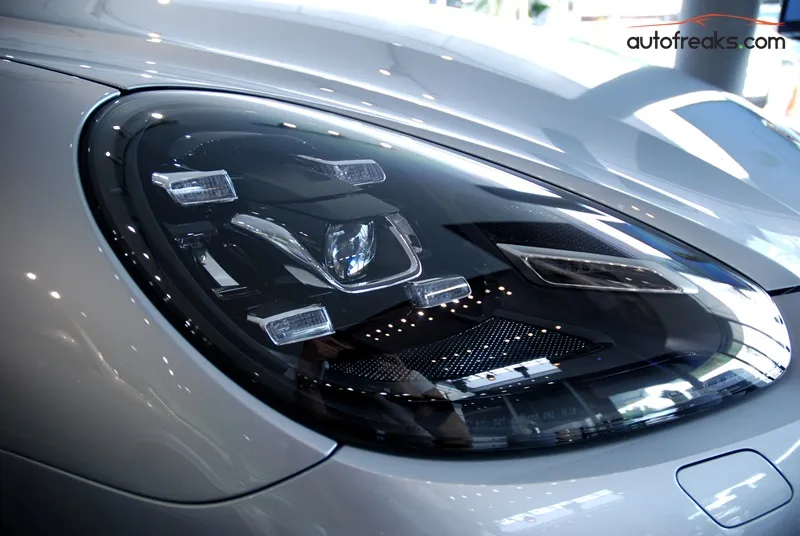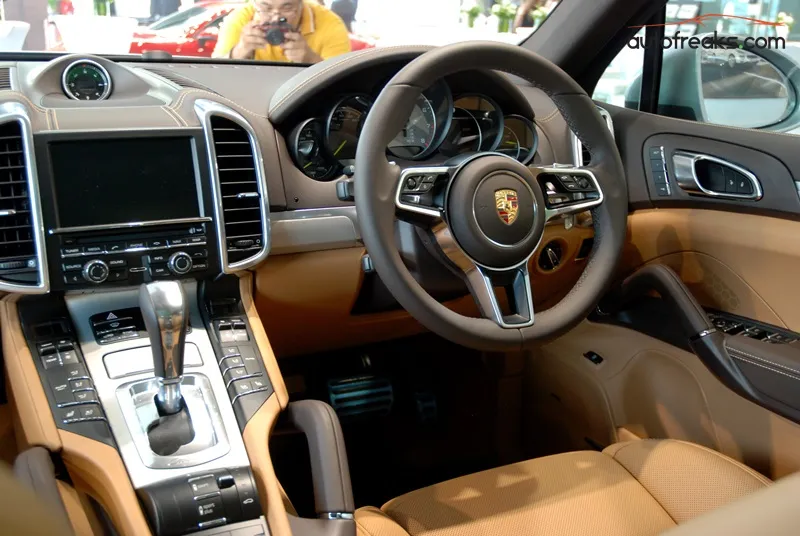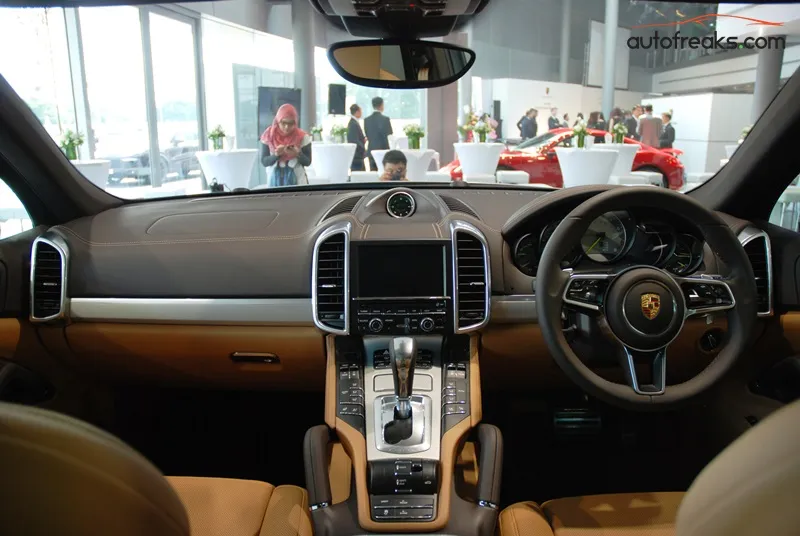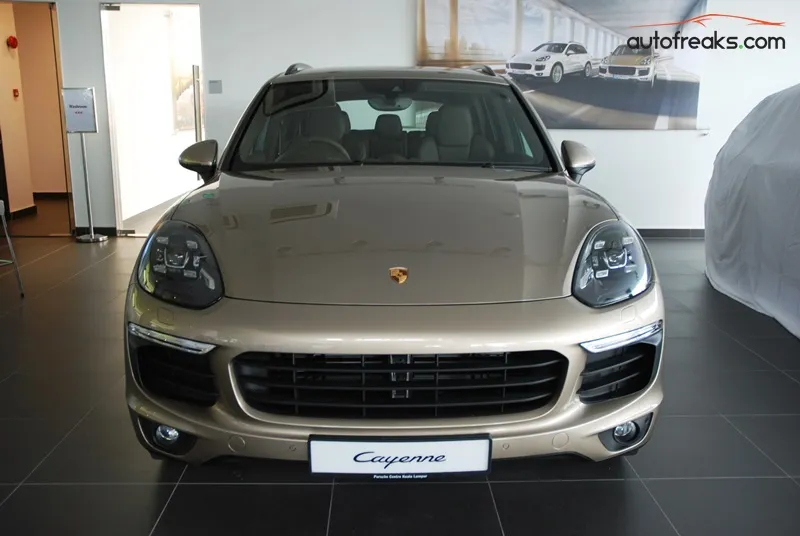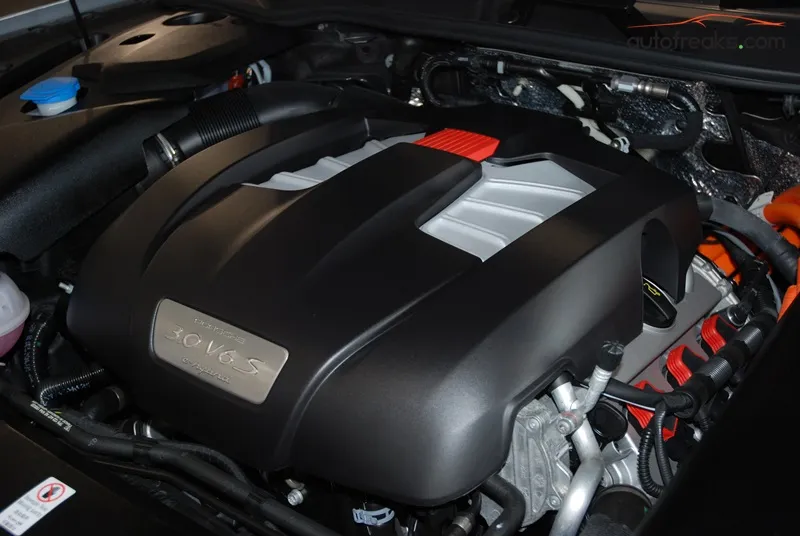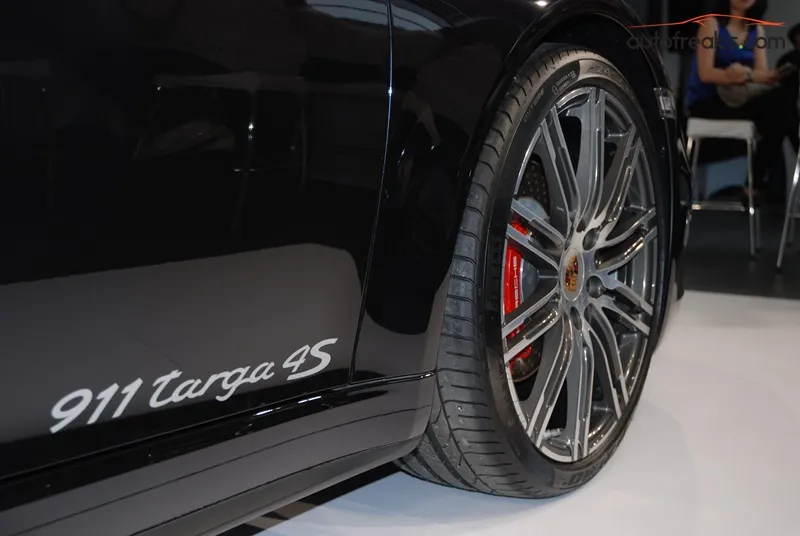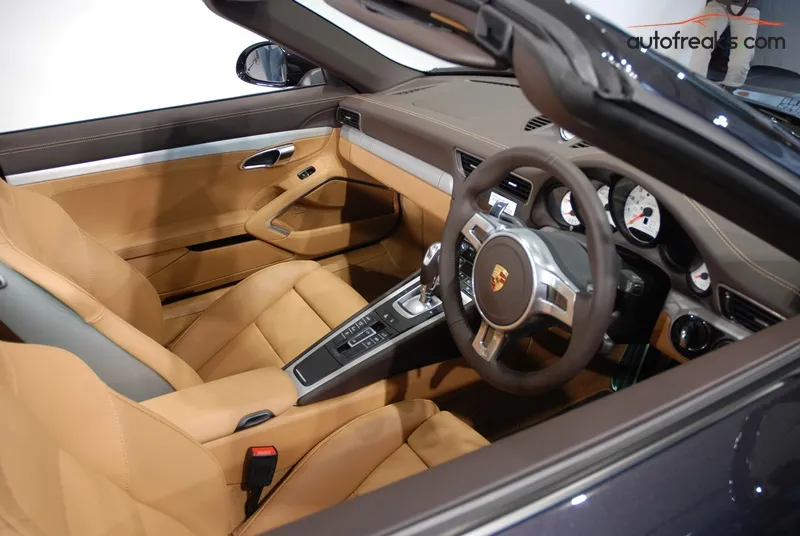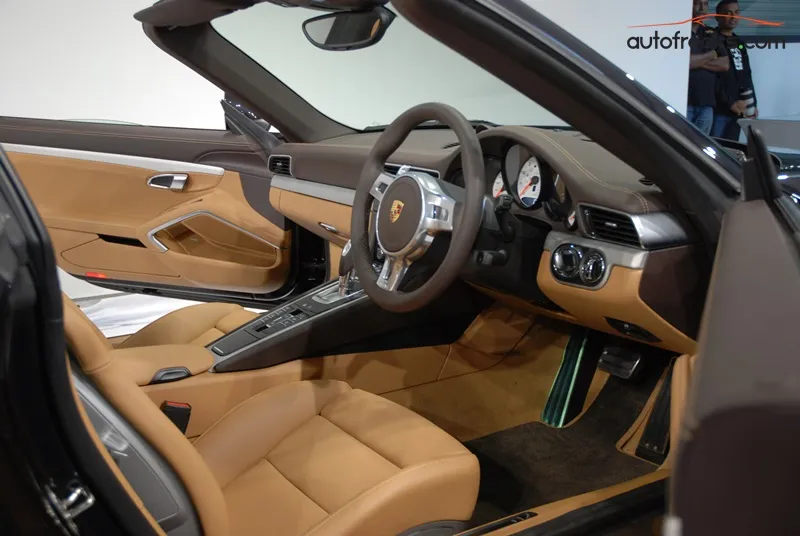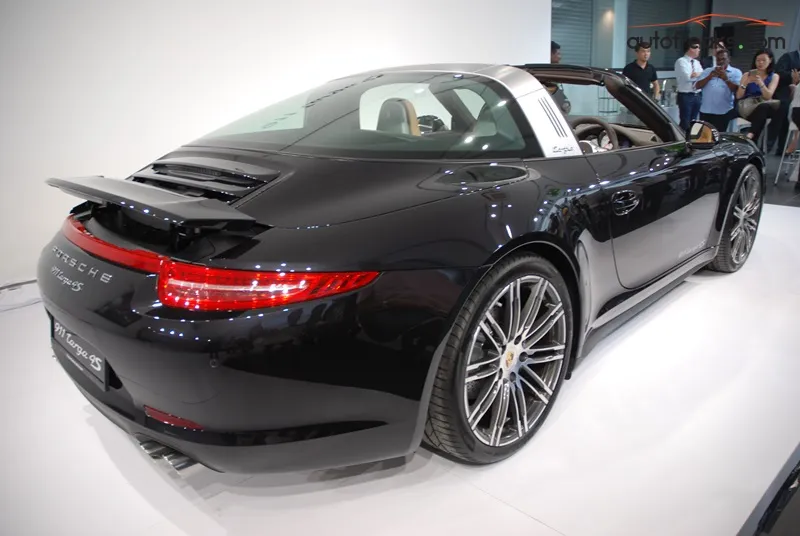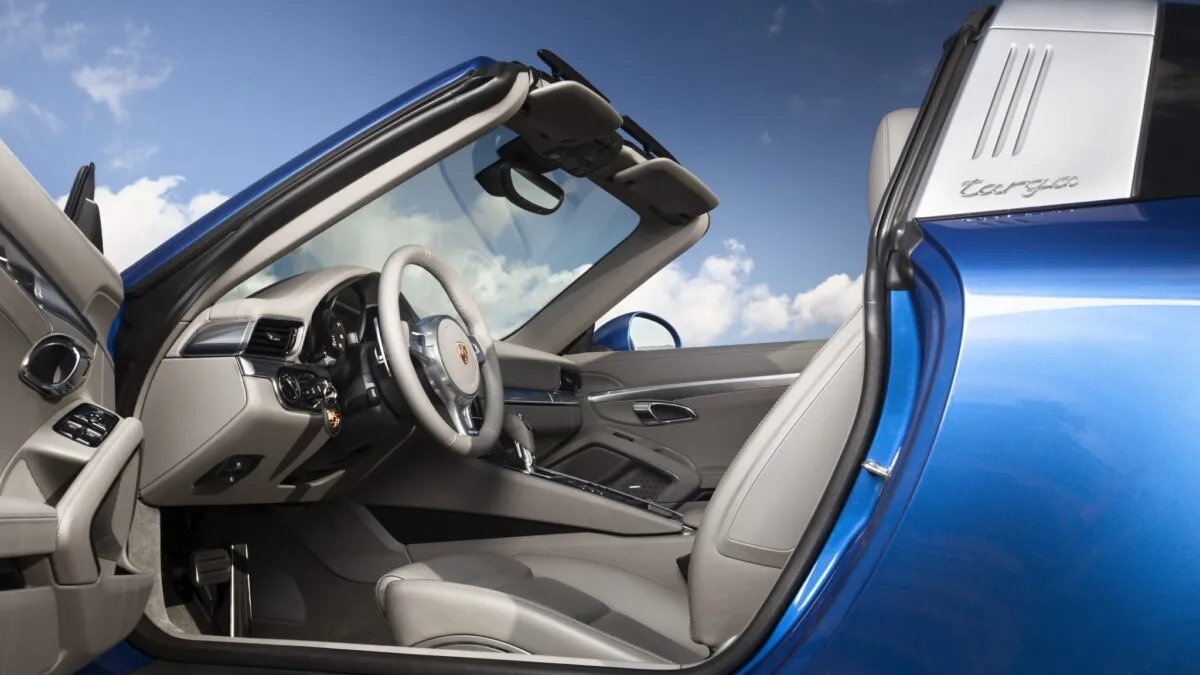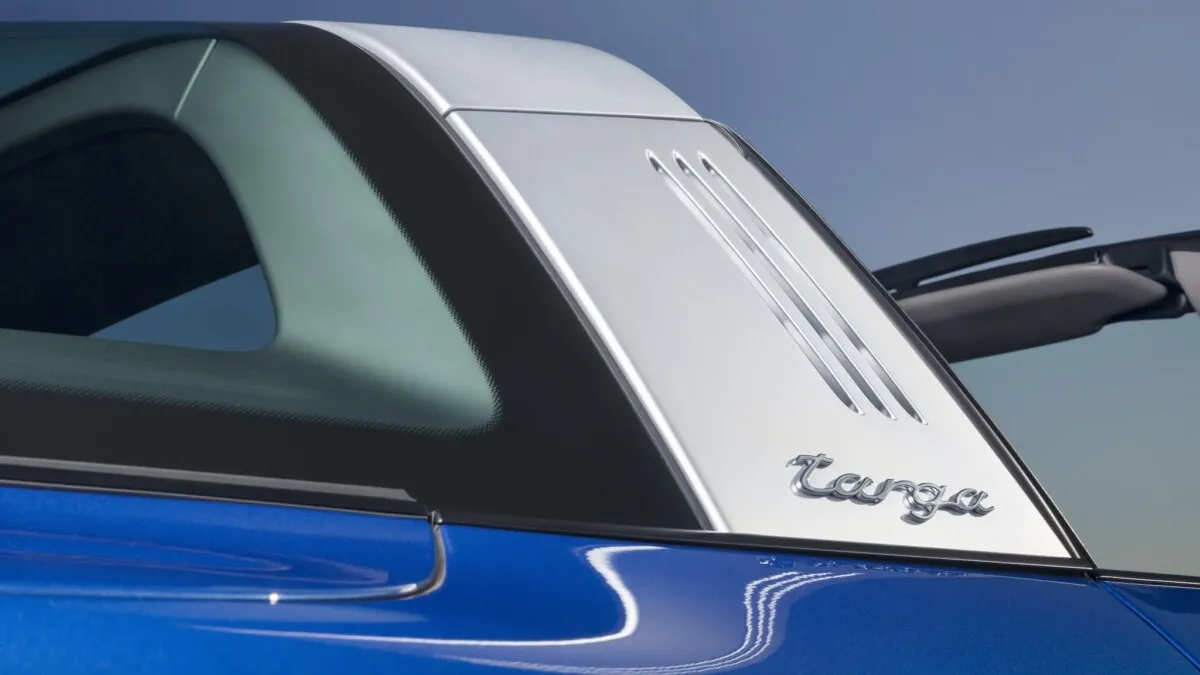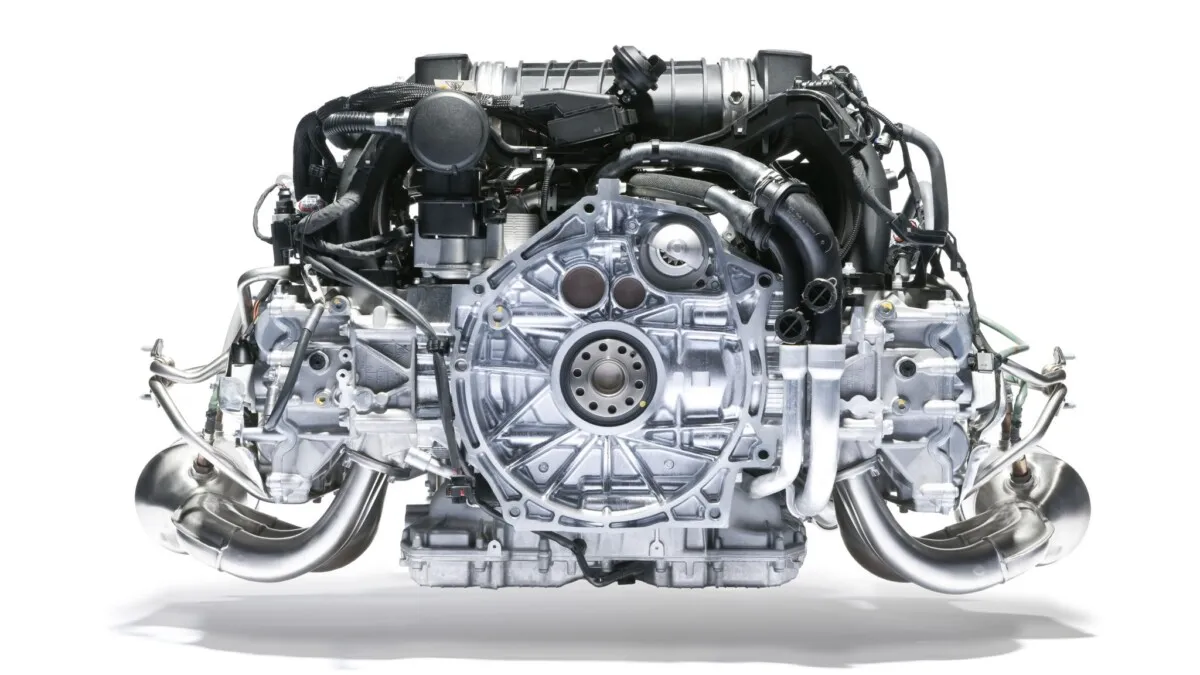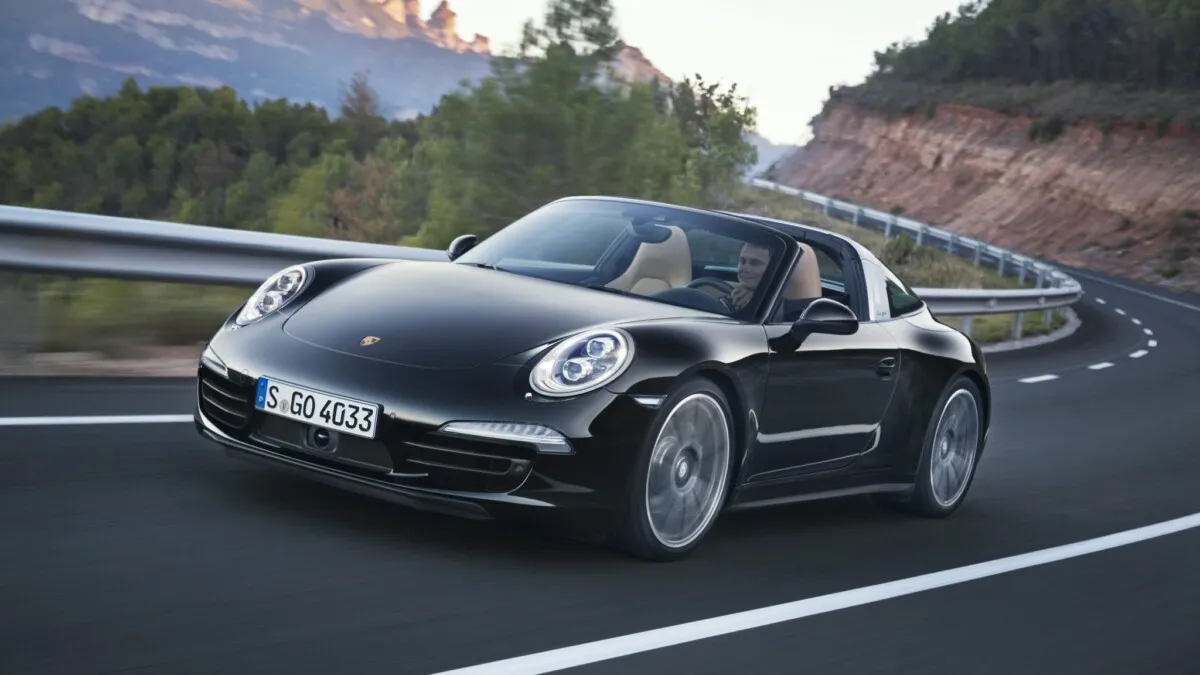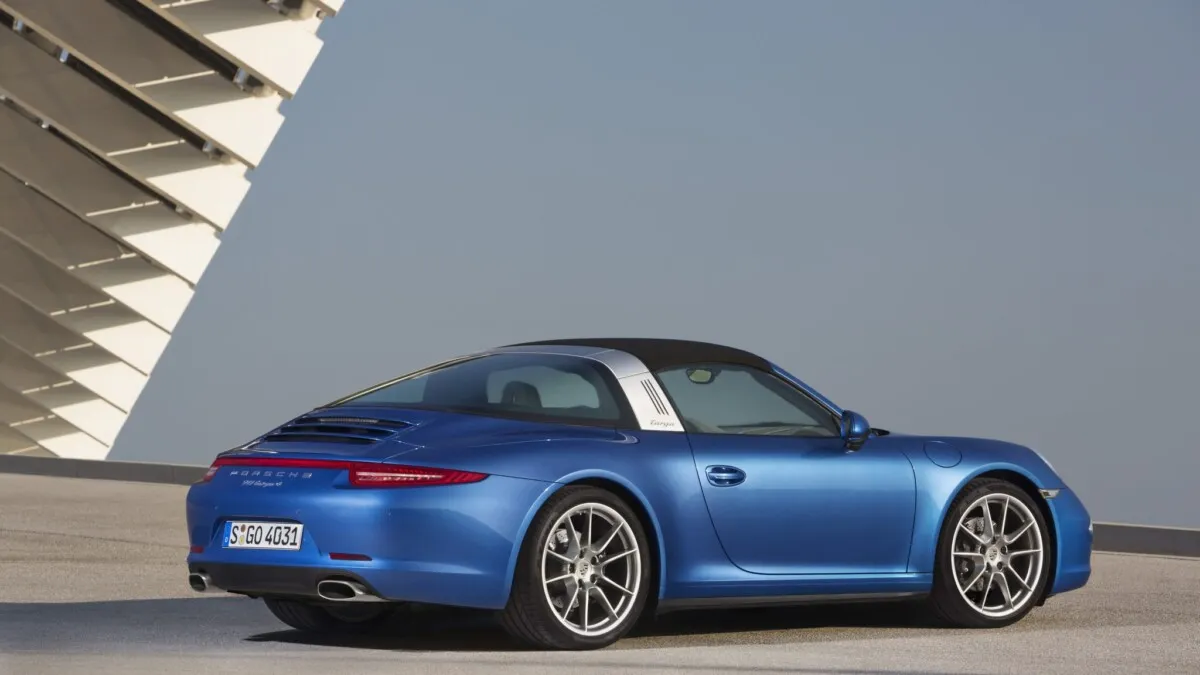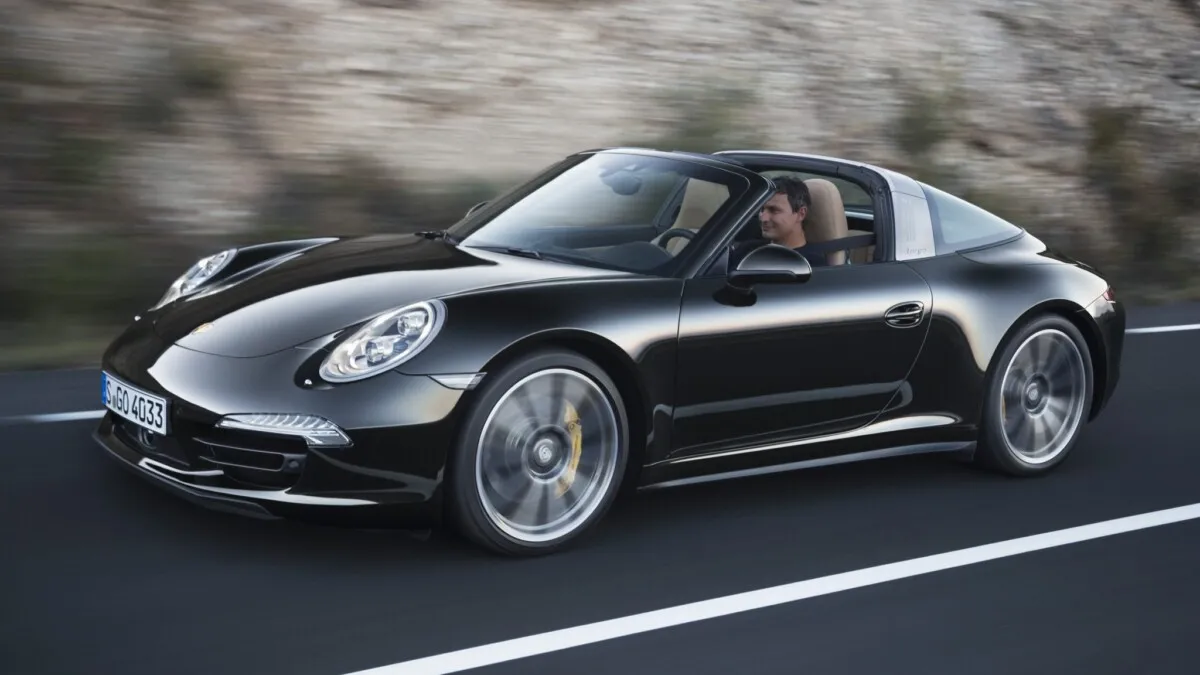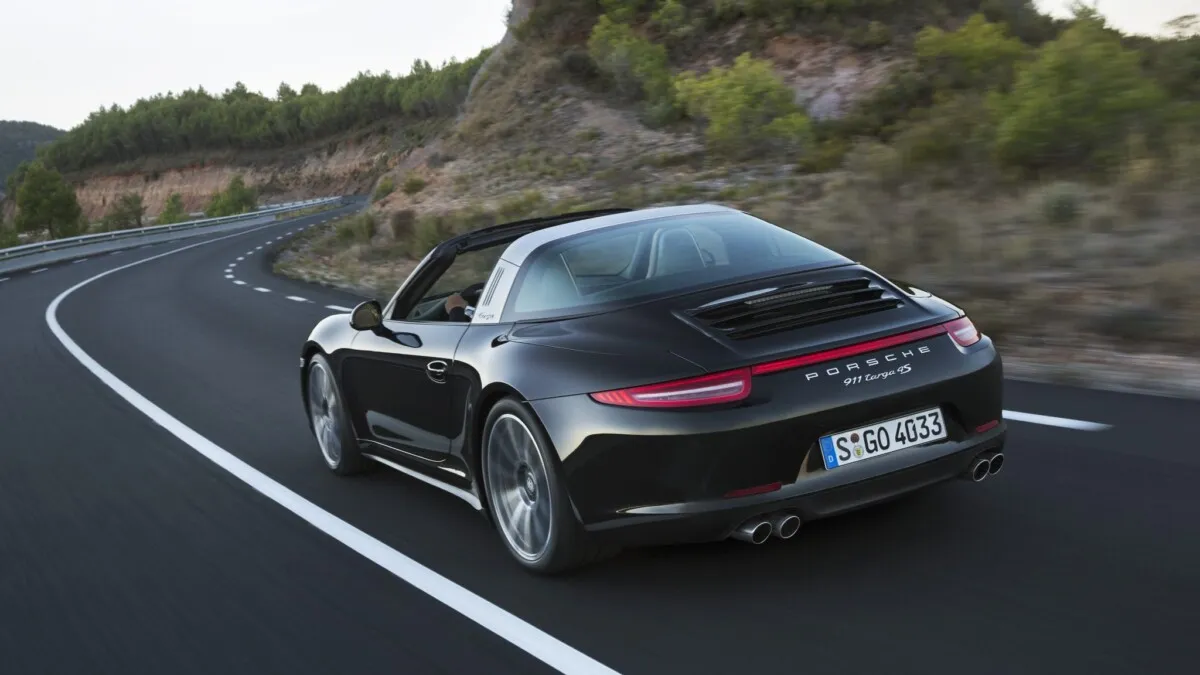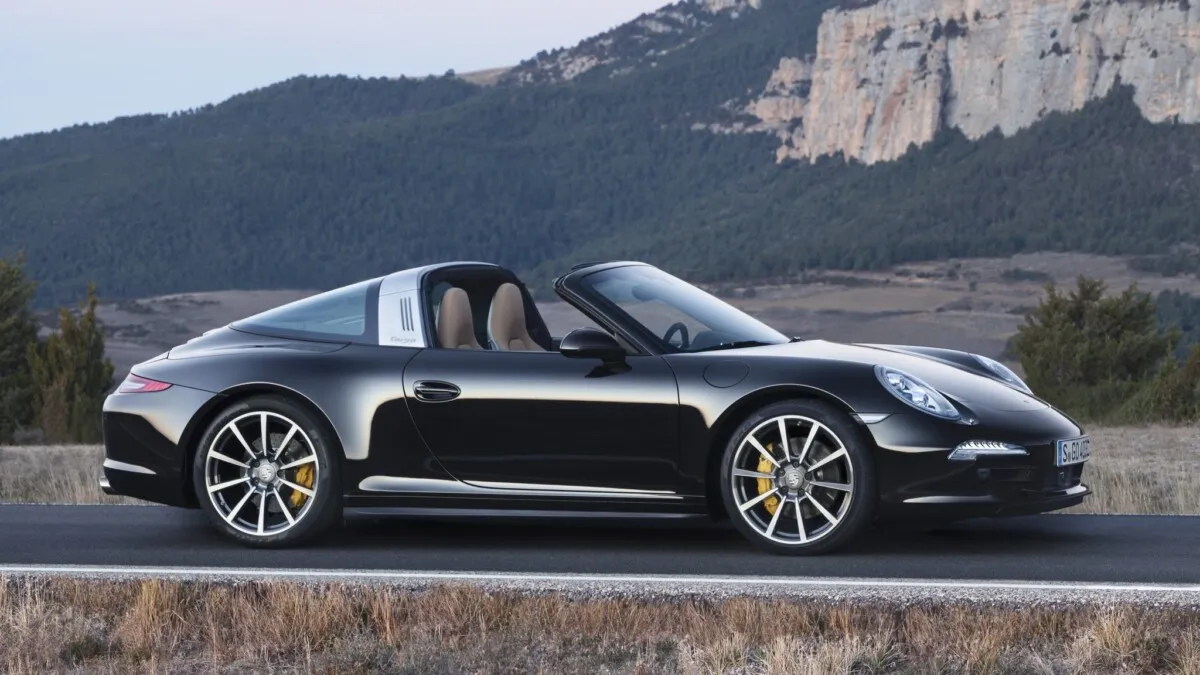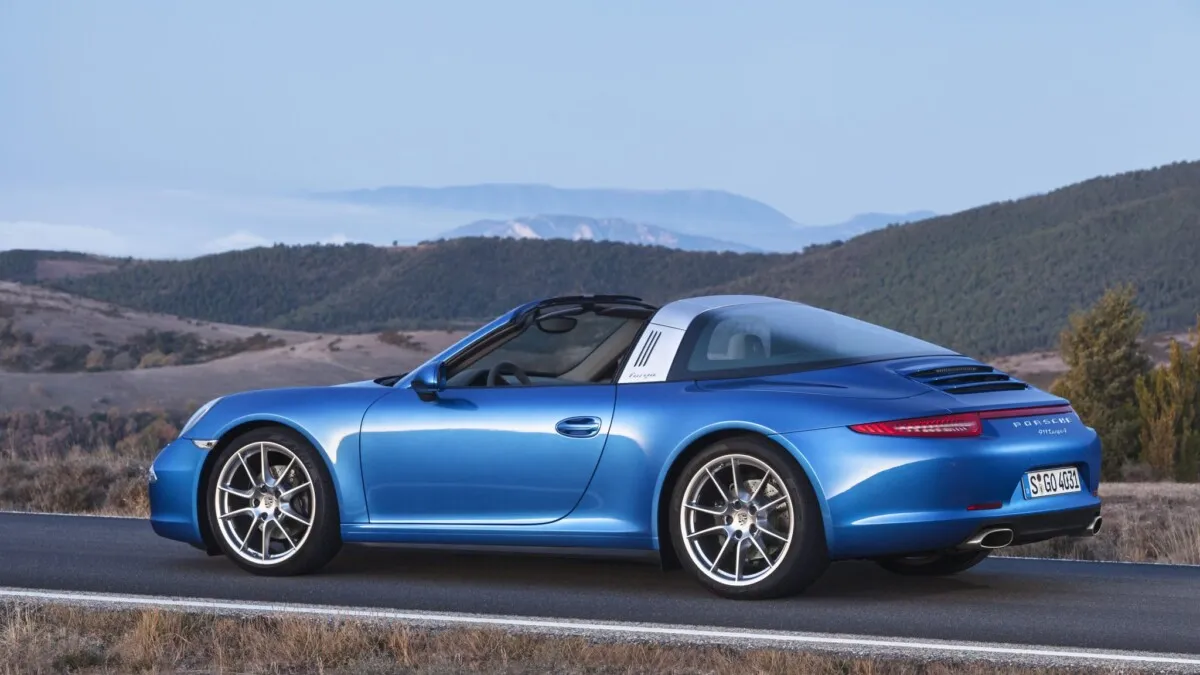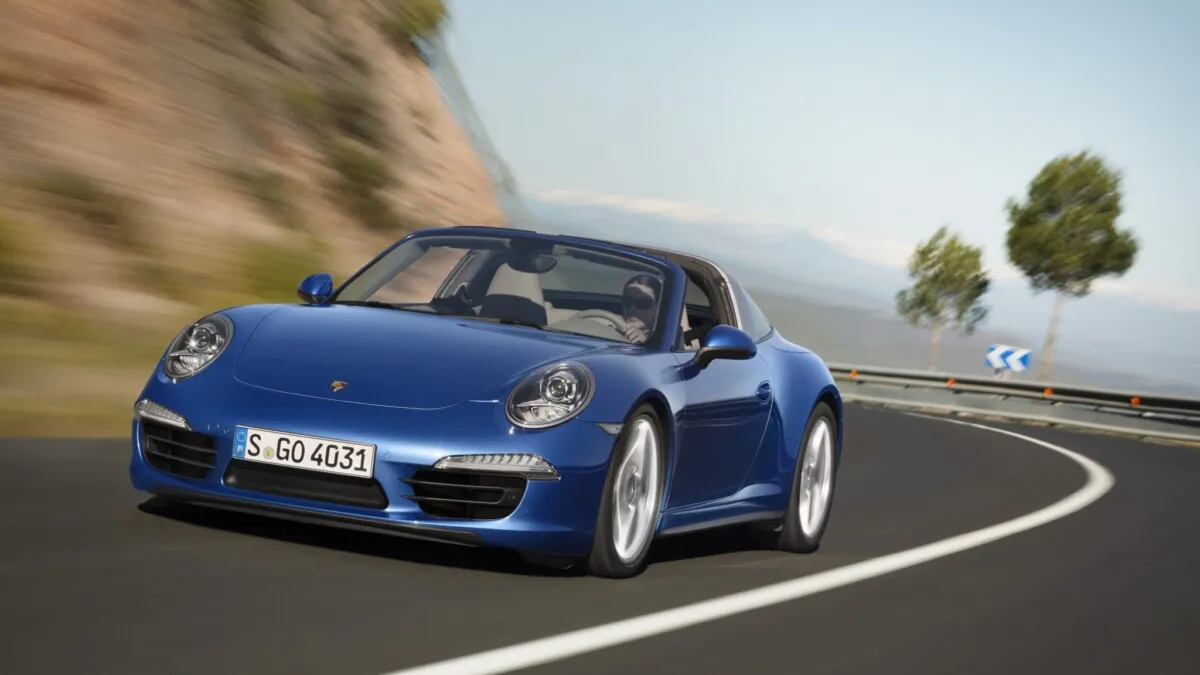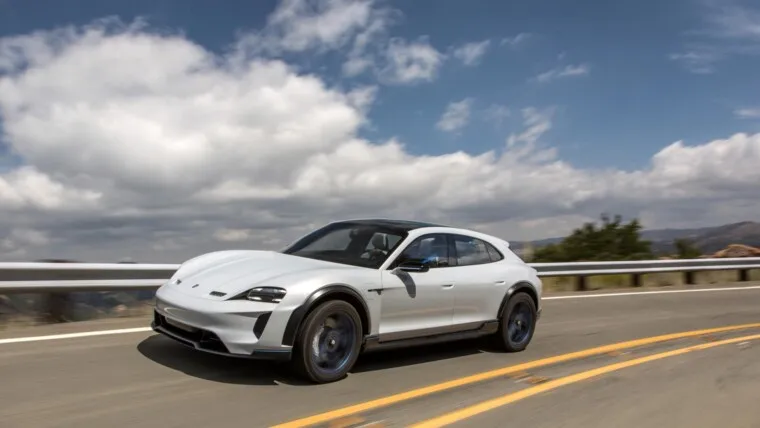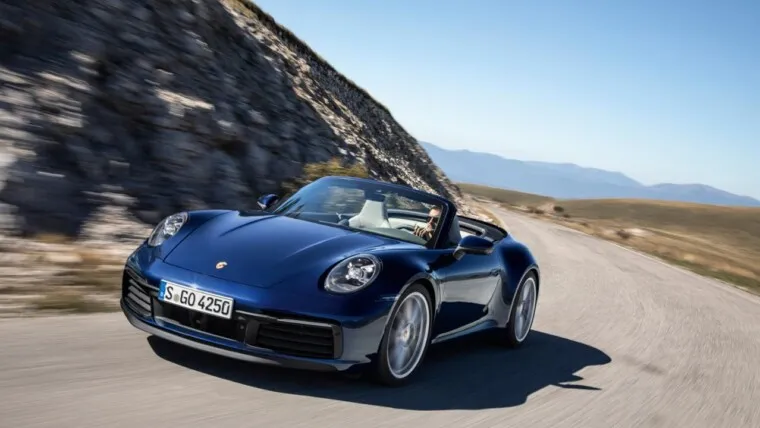To commemorate the opening of Porsche Centre Sungai Besi, SDAP has introduced the highly anticipated new 911 Targa 4S and the new Cayenne models into our local market. With increased efficiency and improved performance, the new Cayenne models offer lower fuel consumption, yet delivers more power and higher torque than its predecessors. The 911 meanwhile calls upon legendary Targa styling and brings to life a modern classic.
Porsche 911 Targa 4S
The new 911 Targa is the fascinating symbiosis between the timeless design of the original Targa and the contemporary sportiness of the seventh generation 911. The return to the original concept, with its characteristic fixed Targa bar, breathes new life into the legend of the 911 Targa in the new models. It renews the Targa tradition with an innovative roof concept.
The roof system consists of two moving parts: a soft top and a glass rear window. At the press of a button, the glass rear window opens to the rear and tilts. It is joined to the stowage box lid. At the same time, two flaps in the Targa bar open and release the soft top kinematics. The soft top is unlatched, folds to the rear into a Z-shape during the opening movement and stows behind the rear seats. A panel running across the car behind the rear seats integrates the soft top. Finally, the flaps in the bar and the rear window close. When the top is stowed, a wind deflector integrated in the cowl can be adjusted manually. It reduces wind-buffeting to the interior significantly.
While the car is stationary, the roof can be opened or closed in about 19 seconds from controls on the centre console. To protect the car from damage, the standard integrated rear Park Assist monitors the area behind the 911 Targa while the roof is opened and closed. If the sensors detect an obstacle within a range of less than 40 centimetres, a warning sounds. This prevents the rear window that is being tipped back from colliding with a closely parked vehicle or other object standing behind the 911 Targa.
The 911 Targa 4S develops 400 hp from a 3.8-litre engine. Its top speed is 296 km/h, and it handles the benchmark sprint to 100 km/h in 4.4 seconds when equipped with PDK and the Sport Chrono package. Fuel consumption ranges from 10.0 to 9.2 l/100 km (237-214 g/km CO2), depending on the transmission fitted. So, the car’s engine and vehicle performance data as well as fuel efficiency are equivalent to those of the 911 Carrera 4 Cabriolet.
Check out our review of the 911 Targa here.
The new Cayenne models
The new Cayenne models will be offered in five variants: Cayenne, Cayenne Diesel, Cayenne S, Cayenne S Diesel, as well as the the Cayenne S E-Hybrid, the first plug-in hybrid in the premium SUV segment.
The Cayenne S E-Hybrid offers outstanding fuel consumption and emission values in the premium SUV segment: 3.4 litres per 100 kilometres and 79 g/km CO2. Together with the Panamera S E-Hybrid and the 918 Spyder, Porsche is currently the only manufacturer in the world to offer three plug-in hybrid models.
For the new Cayenne models, all of them boast improved performance and torque coupled with lower fuel consumption. The familiar engines have been upgraded and optimised for the Cayenne. They consume less fuel than their direct predecessors and yet have improved performance figures.
The Cayenne S with a 3.6 litre V6 bi-turbo engine for instance, is brand new. This engine was specially developed for Porsche SUVs and was initially fitted in the Macan. In the Cayenne S, it surpasses the previous V8 engine in all key data. The bi-turbo charging and downsizing via a reduction of the engine capacity and the number of cylinders enable a clear efficiency increase coupled with improved driving performance. For example, the power output has increased by 20 hp to 420 hp and the torque has increased by 50 Nm to 550 Nm, whilst the fuel consumption has fallen by 0.9 litres to less than ten litres per 100 kilometres.
The power output of the top model Cayenne Turbo has also increased by 20 hp to 520 hp and the torque by 50 Nm to 750 Nm. It therefore accelerates three tenths of a second more quickly than its predecessor and reaches a top speed of 279 km/h. Nevertheless, fuel consumption has been reduced by 0.3 litre/100 km.
Not only the new Cayenne S E-Hybrid but also the diesel models set standards in fuel consumption. The Cayenne Diesel now has more power and torque coupled with a reduction in fuel consumption and therefore an increased maximum range. Thanks to a larger turbocharger, the maximum power output of the 3.0-litre V6 engine has increased by 17 hp to a total of 262 hp, whilst the maximum torque has increased by 30 Nm to 580 Nm. This is manifested in the sprint from 0 to 100 km/h that is now 0.3 seconds faster and a top speed of 221 km/h – with fuel consumption of 6.8 to 6.6 l/100 km.
The Cayenne S Diesel cleverly combines the advantages of a charged diesel engine with the emotional appeal of a petrol engine. The 4.2 litre V8 turbodiesel engine develops a power output of 385 hp and an impressive 850 Nm of torque and thus offers ample power reserves for every situation. It sprints from 0 to 100 km/h in 5.4 seconds. The top speed is 252 km/h. Fuel consumption in accordance with the NEDC is 8.0 l/100 km.
Photo Gallery: Porsche Cayenne
Photo Gallery: Porsche 911 Targa 4S




